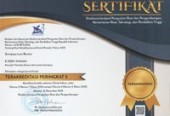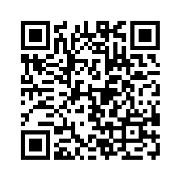Society 5.0: A New Challenge to Legal Norms
Abstract
Keywords
Full Text:
PDFReferences
Arsovski, Slavko. “Quality Of Life And Society 5.0,” 2020. http://www.cqm.rs/2019/papers_iqc/81.pdf.
Atkinson, Katie. “Autonomous Cars : A Driving Force for Change in Motor Liability and Insurance.” Atkinson 17, no. 1 (January 2020): 125–51. https://doi.org/10.2966/scrip.170120.125.
Brendan Alan, and Melander. “Smart Stadiums: An Illustration of How the Internet of Things Is Revolutionising the World.” Sports & Entertainment Law Journal 6, no. 2 (2017): 349–82.
Cabinet Office the Government of Japan, Society 5.0, http://www8.cao.go.jp/cstp/english/basic/5thbasicplan.pdf.
Calo, Ryan. “Robotics and the Lessons of Cyberlaw.” California Law Review, 2015.
Farkas, Thomas J. “Data Created by the Internet of Things: The New Gold without Ownership?” Revista La Propiedad Inmaterial, 2017. https://doi.org/10.18601/16571959.n23.01.
Ferreira, Carlos Miguel, and Sandro Serpa. “Society 5 . 0 and Social Development.” Preprints, 2018. https://doi.org/10.20944/preprints201811.0108.v1.
Fukuyama, Mayumi. “Society 5.0: Aiming for a New Human-Centered Society.” Japan Spotlight, 2018.
Hashim, H H, and M Z Omar. “Towards Autonomous Vehicle Implementation : Issues and Opportunities.” Journal of the Society of Automotive Engineers Malaysia, 2017.
Hayashi, Hisanori, Hisashi Sasajima, Yoichi Takayanagi, and Hirco Kanamaru. “International Standardization for Smarter Society in the Field of Measurement, Control and Automation.” In 2017 56th Annual Conference of the Society of Instrument and Control Engineers of Japan, SICE 2017, 2017. https://doi.org/10.23919/SICE.2017.8105723.
Herbert B. Dixon. “Cloud Computing.” Judges Journal 51, no. 2 (2012): 36.
Hsiao, Jerry I-H. “Smart Contract on the Blockchain-Paradigm Shift for Contract Law.” US-China Law Review 14 (2017).
IBM. “2.5 Quintillion Bytes of Data Created Every Day. How Does CPG & Retail Manage It?,” 2019. https://www.ibm.com/blogs/insights-on-business/consumer-products/2-5-quintillion-bytes-of-data-created-every-day-how-does-cpg-retail-manage-it/.
Johnson, David R., and David Post. “Law and Borders - The Rise of Law in Cyberspace.” Stanford Law Review, 1996. https://doi.org/10.5210/fm.v1i1.468.
Kolber, Adam J, Jonathan Askin, Ryan Calo, David Chalmers, Adam Elga, Daniel Estrada, Drew Hinkes, et al. “Not-So-Smart Blockchain Contracts and Artificial Responsibility,” n.d.
Krönke, Christoph. “Data Regulation in the Internet of Things.” Frontiers of Law in China. Brill Academic Publishers, October 2018. https://doi.org/10.3868/s050-007-018-0028-9.
Kum, Seung Woo, Mingoo Kang, and Jong Il Park. “Iot Delegate: Smart Home Framework for Heterogeneous Iot Service Collaboration.” KSII Transactions on Internet and Information Systems 10, no. 8 (August 2016): 3958–71. https://doi.org/10.3837/tiis.2016.08.029.
“Legal Perspectives on the Internet of Things.” Conferinta Internationala de Drept, Studii Europene Si Relatii Internationale, n.d., 523–32.
Lemley, Mark A., and Bryan Casey. “Remedies for Robots.” SSRN Electronic Journal, 2018. https://doi.org/10.2139/ssrn.3223621.
Lemley, Mark A., and Eugene Volokh. “Law, Virtual Reality, and Augmented Reality.” University of Pennsylvania Law Review, 2018. https://doi.org/10.1016/b978-0-08-102253-5.00007-1.
Liu, Hong, Huansheng Ning, Qitao Mu, Yumei Zheng, Jing Zeng, Laurence T. Yang, Runhe Huang, and Jianhua Ma. “A Review of the Smart World.” Future Generation Computer Systems, 2019. https://doi.org/10.1016/j.future.2017.09.010.
McClure, Paul K. “‘You’re Fired,’ Says the Robot: The Rise of Automation in the Workplace, Technophobes, and Fears of Unemployment.” Social Science Computer Review, 2018. https://doi.org/10.1177/0894439317698637.
Nekit, Kateryna, Denis Kolodin, and Valentyn Fedorov. “Personal Data Protection and Liability for Damage in the Field of the Internet of Things.” Juridical Tribune 10 (2020): 80–93.
Oliphant, Ken. “Liability for Road Accidents Caused by Driverless Cars.” Singapore Comparative Law Review 2019 (2019).
Özüdoğru, Ayşe Göksu, Esra Ergün, and Djihane Ammari. “How Industry 4.0 Changes Business: A Commercial Perspective.” International Journal of Commerce and Finance, 2018.
Paez, Mauricio, and Kerianne Tobitsch. “The Industrial Internet of Things: Risks, Liabilities, and Emerging Legal Issues.” New York Law School Law Review 62 (2017).
Pirvu, B. C., and C. B. Zamfirescu. “Smart Factory in the Context of 4th Industrial Revolution: Challenges and Opportunities for Romania.” In IOP Conference Series: Materials Science and Engineering, 2017. https://doi.org/10.1088/1757-899X/227/1/012094.
Pradyumna, P. Karan. “The Non-Western World.” The Non-Western World: Environment, Development and Human Rights, September 2004, 1–589. https://doi.org/10.4324/9780203331255.
Ratti, Bruno. “Geographic Knowledge. Paradigm of Society 5.0.” Copyright© Nuova Cultura Italian Association of Geography Teachers Journal of Research and Didactics in Geography (J-READING, 2018. https://doi.org/10.4458/0623-08.
Savanevičienė, Asta, Gita Statnickė, and Sigitas Vaitkevičius. “Individual Innovativeness of Different Generations in the Context of the Forthcoming Society 5.0 in Lithuania.” Engineering Economics, 2019. https://doi.org/10.5755/j01.ee.30.2.22760.
Serpanos, Dimitrios. “The Cyber-Physical Systems Revolution.” Computer, 2018. https://doi.org/10.1109/MC.2018.1731058.
Shackelford, Scott J., and Scott Russell. “Above the Cloud: Enhancing Cybersecurity in the Aerospace Sector.” FIU Law Review 10, no. 2 (January 2015). https://doi.org/10.25148/lawrev.10.2.16.
Temte, Morgan. “Blockchain Challenges Traditional Contract Law: Just How Smart Are Smart Contracts?” Wyoming Law Review 19, no. 1 (January 2019).
“Tesla Driver Is Charged in a Deadly Crash Involving Autopilot : NPR,” accessed January 19, 2022, https://www.npr.org/2022/01/18/1073857310/tesla-autopilot-crash-charges.
Trautman, Lawrence J. “Industrial Cyber Vulnerabilities: Lessons from Stuxnet and the Internet of Things.” SSRN Electronic Journal, 2017. https://doi.org/10.2139/ssrn.2982629.
Zheng, Zibin, Shaoan Xie, Hong Ning Dai, Weili Chen, Xiangping Chen, Jian Weng, and Muhammad Imran. “An Overview on Smart Contracts: Challenges, Advances and Platforms.” Future Generation Computer Systems 105 (April 2020): 475–91. https://doi.org/10.1016/j.future.2019.12.019.
DOI: http://dx.doi.org/10.28946/slrev.Vol6.Iss1.1415.pp41-54
Refbacks
- There are currently no refbacks.

Sriwijaya Law Review (SLRev) ISSN: 2541-5298 | e-ISSN: 2541-6464 is licensed under a Creative Commons Attribution-ShareAlike 4.0 International License.






















